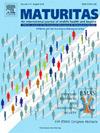内在能力在预测癌症死亡率中的作用——来自英国生物银行的证据
IF 3.6
2区 医学
Q2 GERIATRICS & GERONTOLOGY
引用次数: 0
摘要
目的探讨中老年人内在能力与癌症死亡率之间的关系。方法:我们分析了来自英国生物银行的443,130名参与者的前瞻性队列,其中七个生物标志物反映了五个内在能力领域的功能水平,以计算总分(范围从0[较好]到+4[差])。使用Cox比例风险模型对多个潜在混杂因素进行调整,估计内在能力评分与任何类型癌症死亡率之间的关系(截至2022年12月31日)。结果在中位随访10.6年期间(四分位间距[IQR] 10.0, 11.3), 13483例死亡归因于所有癌症。在整个样本中,调整后的模型显示,更高的内在能力(即+4分)与癌症死亡率的显著增加相关(男性的平均风险比[HR] 1.20, 95% CI 1.06-1.35 [C-index = 0.72],女性的平均风险比[HR] 1.29, 1.14-1.46 [C-index = 0.69])。按年龄和性别分层的亚组分析显示,与其他种族相比,(1)白人参与者,(2)社会经济剥夺程度较高的个体,(3)当前/曾经吸烟的个体,(4)经常饮酒的个体,(5)身体质量指数为25 kg/m2的个体,以及(6)没有或很少体育活动的个体的效应更大。结论内在能力是癌症死亡率的一个有价值的预测指标,在中老年人中,内在能力缺陷与死亡风险增加密切相关。临床医生应该认识到,即使内在能力只有两种缺陷,也会显著提高癌症死亡率的风险。本文章由计算机程序翻译,如有差异,请以英文原文为准。
The role of intrinsic capacity in predicting cancer mortality – Evidence from the UK Biobank
Aim
To examine the association between intrinsic capacity and cancer mortality in middle-aged and older adults.
Methods
We analysed a prospective cohort of 443,130 participants from the UK Biobank, with seven biomarkers reflecting the level of functioning in five domains of intrinsic capacity to calculate an overall score (ranging from 0 [better] to +4 [poor]). Associations between intrinsic capacity scores and mortality from any type of cancer (censored as of December 31, 2022) were estimated using Cox proportional hazard models adjusted for multiple potential confounders.
Results
During a median follow-up of 10.6 years (interquartile range [IQR] 10.0, 11.3), 13,483 deaths were attributed to all cancers. In the full sample, the adjusted model showed that higher intrinsic capacity (i.e. a score of +4) was associated with a significant increase in cancer mortality (mean hazard ratio [HR] 1.20, 95 % CI 1.06–1.35, in men [C-index = 0.72] and 1.29, 1.14–1.46, in women [C-index = 0.69]). Subgroup analyses stratified by age and sex revealed larger effect sizes among (1) White participants compared with other ethnic groups, (2) individuals with higher socioeconomic deprivation, (3) current/former smokers, (4) frequent alcohol consumers, (5) those with a body mass index >25 kg/m2, and (6) individuals reporting no or low physical activity.
Conclusion
Intrinsic capacity serves as a valuable predictor of cancer mortality, with deficits strongly associated with increased mortality risk in both middle-aged and older adults. Clinicians should recognise that even the presence of only two deficits in intrinsic capacity can significantly elevate the risk of cancer mortality.
求助全文
通过发布文献求助,成功后即可免费获取论文全文。
去求助
来源期刊

Maturitas
医学-妇产科学
CiteScore
9.10
自引率
2.00%
发文量
142
审稿时长
40 days
期刊介绍:
Maturitas is an international multidisciplinary peer reviewed scientific journal of midlife health and beyond publishing original research, reviews, consensus statements and guidelines, and mini-reviews. The journal provides a forum for all aspects of postreproductive health in both genders ranging from basic science to health and social care.
Topic areas include:• Aging• Alternative and Complementary medicines• Arthritis and Bone Health• Cancer• Cardiovascular Health• Cognitive and Physical Functioning• Epidemiology, health and social care• Gynecology/ Reproductive Endocrinology• Nutrition/ Obesity Diabetes/ Metabolic Syndrome• Menopause, Ovarian Aging• Mental Health• Pharmacology• Sexuality• Quality of Life
 求助内容:
求助内容: 应助结果提醒方式:
应助结果提醒方式:


